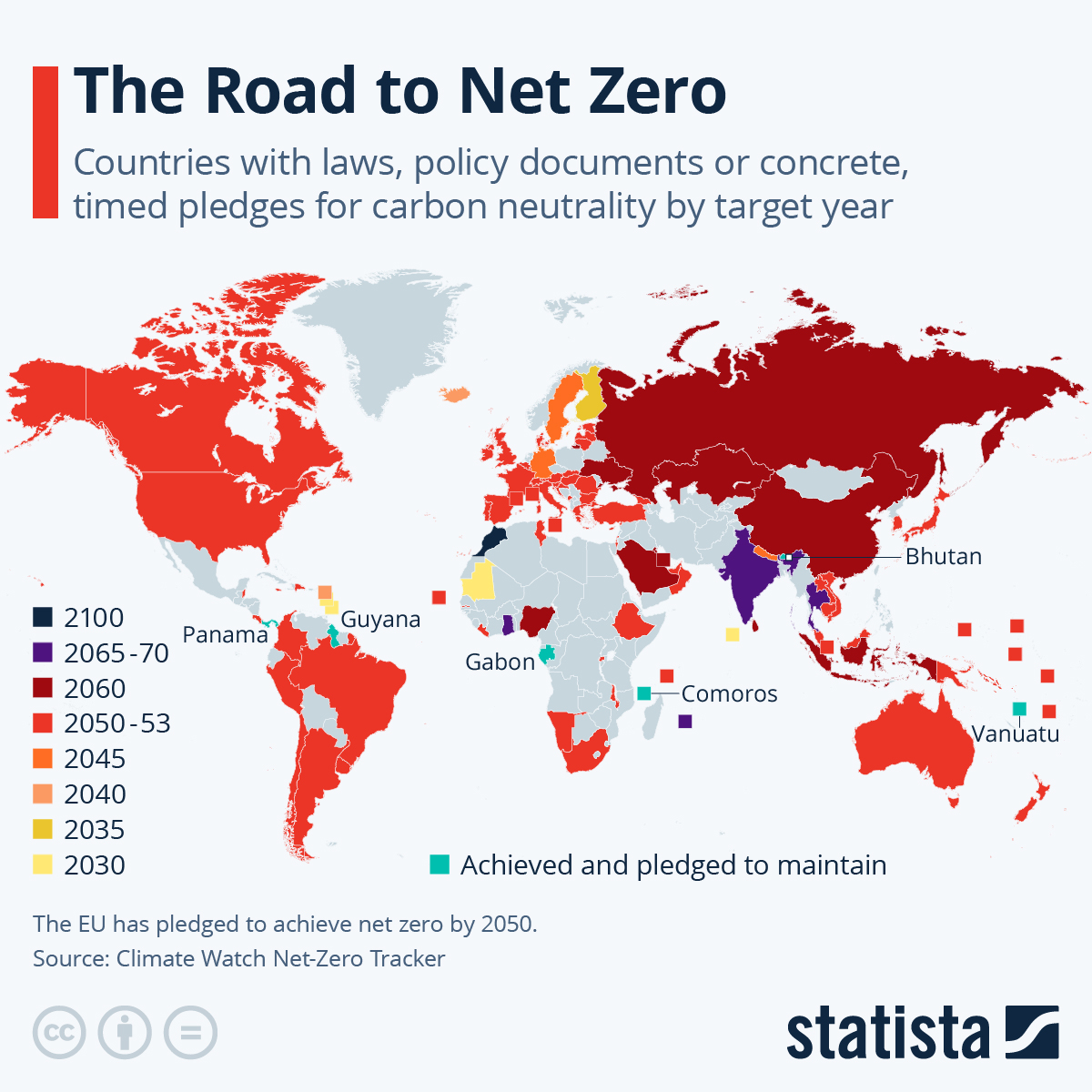Net Zero Targets: how many of the 135 countries pledging carbon neutrality are actually committed? Insights from the latest net zero tracker report
With climate change a growing concern, countries around the world are racing to achieve carbon neutrality. But who’s leading the charge and when will they get there? We’ve mapped out the different target years of countries worldwide, from Finland’s ambitious goal to reach carbon neutrality by 2035, to others targeting 2050 or later.
RELEVANT SUSTAINABLE GOALS


Net Zero Targets : Insights from the Latest Net Zero Tracker Report
According to the latest report by Net Zero Tracker, out of the 135 countries that have committed to achieving carbon neutrality, only 66 have specified a target year in their policies, laws, or propositions. While this number may seem low, it’s still a step in the right direction, especially with major players like Saudi Arabia joining the bandwagon during the COP26 climate summit.
 You will find more infographics at Statista
You will find more infographics at Statista While most of the 66 countries have set target years enshrined in their policies or laws, the road to true carbon neutrality is still long, as our chart indicates. Finland is leading the pack among bigger nations, with a target year of 2035. Iceland and Austria follow closely behind, aiming to reach net-zero by 2040, while Germany and Sweden are pushing their target to 2045. Most countries have put down 2050 as their goal, with some exceptions like China, Saudi Arabia, Sri Lanka, Ukraine, Nigeria, Brazil, Bahrain, and Russia targeting 2060. India, responsible for seven percent of global greenhouse gas emissions, has set 2070 as its target, which is the farthest out of all countries.
While Suriname and Bhutan have already achieved net-zero, the number of countries following suit has risen since the COP26 summit. Benin, Gabon, Guinea-Bissau, Guyana, Cambodia, Liberia, and Madagascar have also joined this small club.
Reducing greenhouse gas emissions is a crucial part of achieving net-zero, but it’s not the only relevant factor. Carbon sinks like rainforests are also important, as carbon neutrality must be viewed as a holistic concept that includes developing technologies to draw greenhouse gases from the atmosphere, conservation measures, and reducing carbon output from industrialized production. As the conversation on carbon neutrality continues, let’s keep the momentum going and see when your country aims to become carbon neutral.
You may also be interested in :
Kochi Water Metro : Asia’s Largest Integrated Water Transport System


